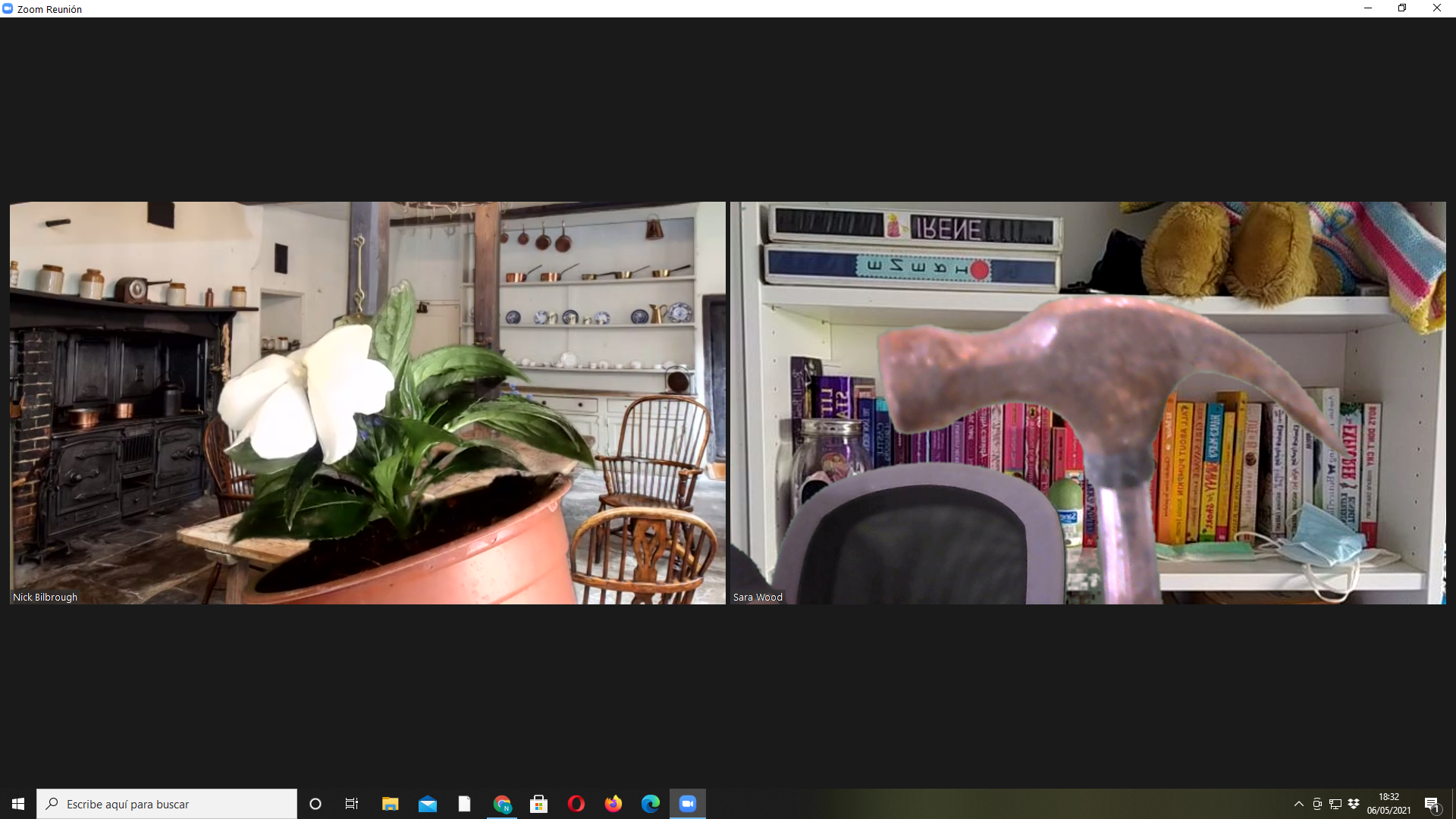If hammers could talk…
1) Make sure everyone has hide-non video participants activated and invite one student onto the virtual stage with you. Everyone else should turn off their cameras. Find a household object ( a spatula, a saucepan, a plant, a bottle opener, hammer etc) which you will use as a puppet in the improvisation. Invite the student to do the same.
2) Make sure that only the two objects can be seen on screen (no faces etc). Now start a spontaneous conversation with the other object as if both objects can speak.
Eg.
Plant: Look! I don't want to complain but you've been making a lot of noise today. I have a really bad headache.
Hammer: It's not my fault you know. I have a headache too! Do you think I chose this job!? It's OK for you. You can just sit in the sun all day.
Plant: My life isn't easy either you know. I get so thirsty but no-one ever thinks to give me a proper drink. Can't you help me please?
etc. etc.
3) After about a minute, end the improvisation and leave the stage, inviting someone else with a different object to join. A new improvisation begins between the two objects. Keep inviting a new object to join so that everyone gets a chance to improvise with two different objects.
Note
This activity is motivating for two reasons. Firstly, it can be very engaging for students to try to think of what a common household object would say if it could speak. Secondly the fact that students don't actually have to show their faces adds a level of safety to the activity and may make them feel less shy about being more spontaneous and creative in what they say.
Plant: I don’t want to complain but you have been making a lot of noise today!

